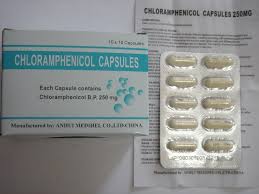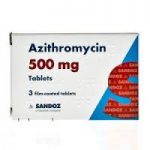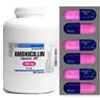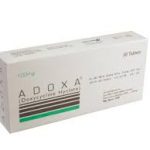Description
Chloramphenicol is one of the first natural antibiotics which has been synthesized in the middle of the XX century. Later, this antibiotic has been synthesized in the chemistry laboratories, and now it is received synthetically only.
The advantage of Chloramphenicol is a high activity as to many bacteria: gram-positive, gram-negative, Spirochaeta, chlamydia, and many others. Chloramphenicol provides bacteriostatic action as to microorganisms; it breaks the synthesis of protein in the cells of bacteria, and then they stop growing and cannot enhance the symptoms of the infectious process.
Chloramphenicol is actively used in medicine, veterinary, and animal farming. In medical practice, this antibiotic is irreplaceable in the treatment of typhoid fever, meningitis, dysentery, salmonella and other severe infectious processes. Despite the variety of the antibiotics, bacteria hardly develop a resistance to Chloramphenicol, and this antibiotic may be used by both adults, and children.
How to take Chloramphenicol?
As soon as you feel the first signs of the infectious disease, have a medical examination and begin the use of Chloramphenicol as soon as possible. If the treatment is started early, it will be possible to neutralize infection by minimal doses of Chloramphenicol.
[tie_list type=”checklist”]
- If infections of the middle severity, adult patients (over 12 years old) are recommended one capsule of Chloramphenicol 250 mg 4 times per day, every 6 hours
- If severe infections, one capsule of Chloramphenicol 500 mg is prescribed 4 times per day, every 6 hours
- Children are recommended to take 50 mg per 1 kg of the body weight, 4 times per day.
[/tie_list]
The maximal dose of Chloramphenicol should not exceed 4 g per day. Using more than 2 g of Chloramphenicol per day, it is necessary to regularly control the functions of kidneys, liver and system of blood formation. The treatment usually lasts for 7 to 14 days depending on the form of the infectious process.
Precautions
[tie_list type=”checklist”]
- Chloramphenicol is contraindicated during pregnancy because it can cause toxic action to fetus
- This antibiotic penetrates into the breast-milk, and therefore the breast-feeding should be stopped during the treatment
- Children under 1 year old, patients with renal failure are contraindicated to take Chloramphenicol
- Beverage drinks are prohibited during the use of Chloramphenicol because it may lead to the development of disulfiram-like reaction
[/tie_list]
Probable side effects
Chloramphenicol can cause a lot of side effects, and that is why patients should be careful and follow all doctor’s recommendations and not to exceed the daily dose.
The side effects of Chloramphenicol are vomiting, flatulency, breathing disorders, headache, nausea, nausea, diarrhea, and skin allergic reaction. If you noticed the side effects after the use of the antibiotic, it is necessary to stop taking Chloramphenicol and consult a doctor.
How to buy Chloramphenicol?
Chloramphenicol antibiotic is for sale in most community pharmacies but you will need a prescription to buy it. If you do not have an opportunity to get a prescription right now, and you do not want to waste time, you can buy Chloramphenicol online without prescription.
Buying Chloramphenicol without prescription, you can contact a pharmacist of the online pharmacy who will reply all your questions and tell you how to use Chloramphenicol without prescription. One can buy Chloramphenicol online in any country, in any day.




